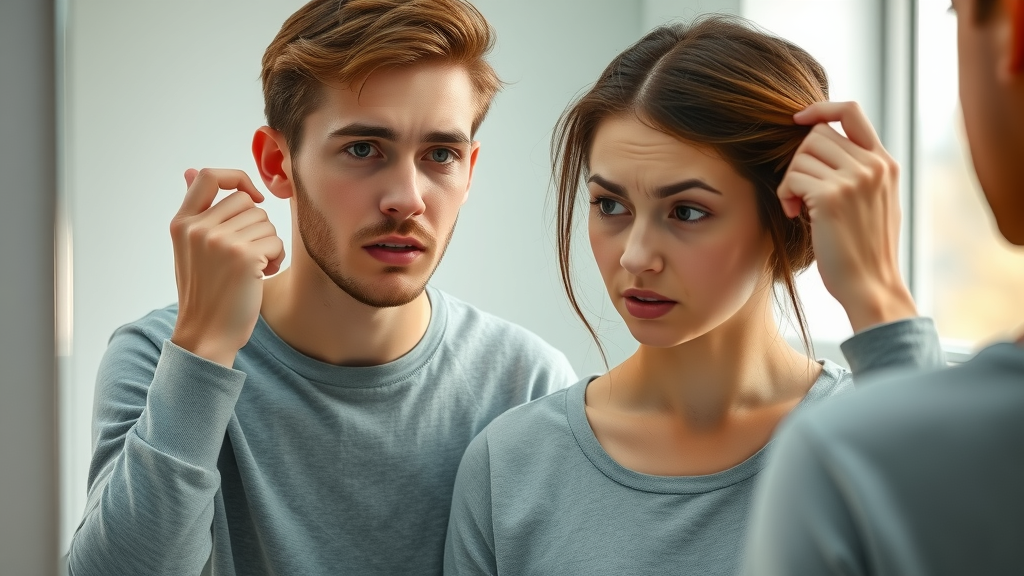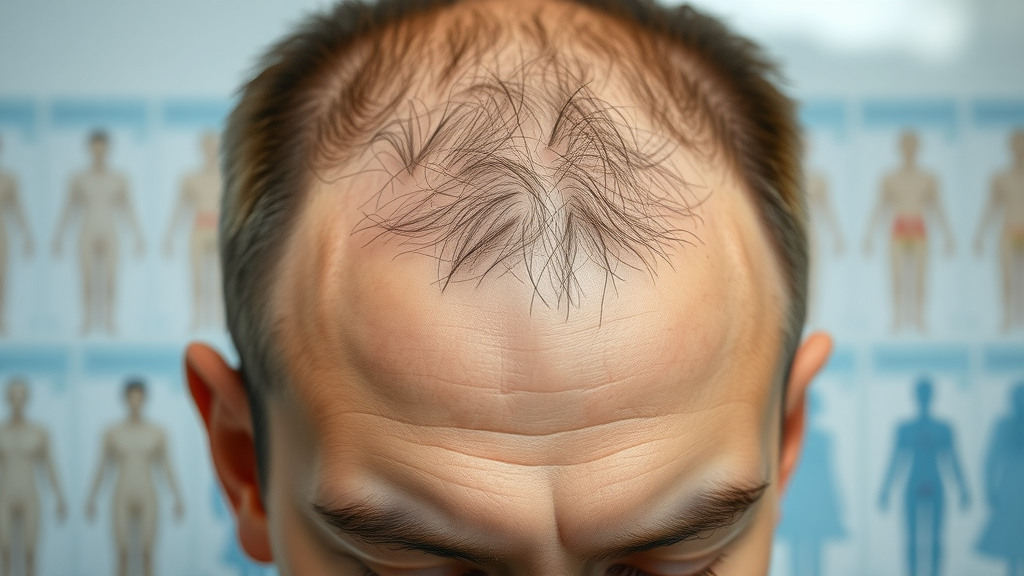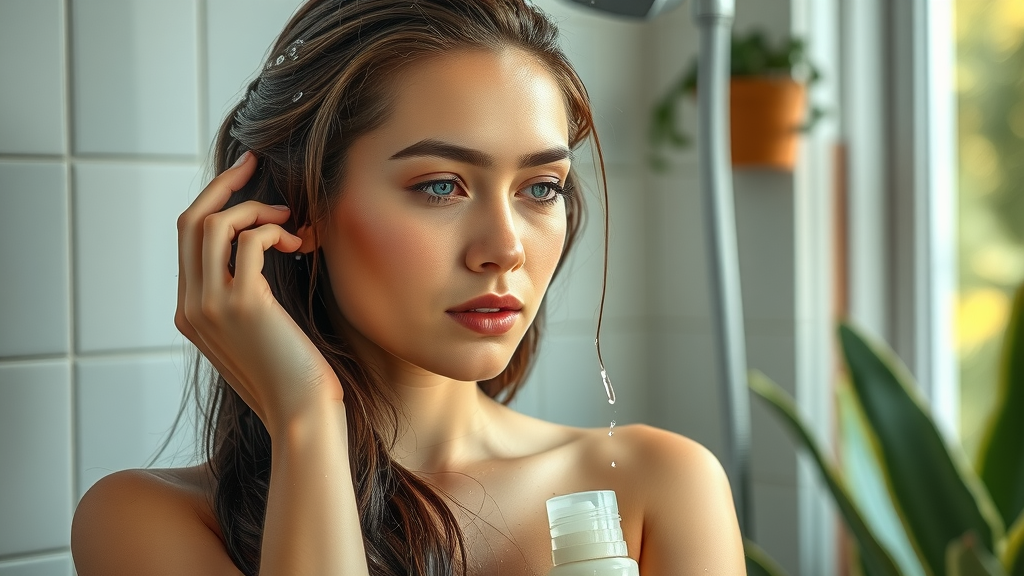Did you know that nearly two-thirds of men experience some degree of hair loss by the age of 35, and women are not far behind? With hair loss affecting millions worldwide, understanding how to prevent hair loss is more crucial than ever. Whether you’re noticing the first signs of thinning hair or want to maintain a full, healthy head of hair, this guide offers evidence-backed strategies and expert advice on hair loss prevention —practical steps you can take today to protect your hair for years to come. Early intervention is key, and starting now can make all the difference for your confidence and hair health.
Surprising Facts about Hair Loss Prevention You Need To Know
Why Millions Are Facing Hair Loss: The Reality Behind the Numbers
"Did you know that nearly two-thirds of men experience some degree of hair loss by the age of 35, and women are not far behind? Early intervention in hair loss prevention can make all the difference."
- Evidence-backed methods for hair loss prevention
- Early signs of hair loss and when to act
- Top recommendations for different hair types
- Professional guidance and natural remedies

Hair loss doesn’t discriminate by gender or age. Recent studies show that pattern hair loss , thinning hair, and alopecia areata impact millions each year. But why is this so common? Genetic predispositions, environmental stressors, hormonal imbalances, and even daily styling choices can all contribute to losing your hair . Understanding these causes equips you to choose the right prevent hair loss strategies and act before it progresses.
By exploring this guide, you’ll discover which methods promote hair growth , when it’s time to speak with a care provider, and how lifestyle tweaks can give your hair the future it deserves. So let’s break down the most important facts and practical steps for hair loss prevention .
Understanding Hair Loss Prevention: Key Concepts and Importance
Types of Hair Loss: What You Need to Know to Prevent Hair Loss
- Androgenetic alopecia
- Telogen effluvium
- Alopecia areata
- Traction alopecia
There are several types of hair loss , and understanding them is crucial for choosing the right hair care approach. The most common is androgenetic alopecia —often called male or female pattern baldness. This is largely genetic, causing gradual thinning over the scalp and affecting both men and women. Other common types include telogen effluvium (usually triggered by stress, illness, or hormonal shifts), alopecia areata (an autoimmune condition that results in patchy hair loss), and traction alopecia (caused by frequent tight hairstyles pulling at the scalp).
Each type has unique triggers and requires tailored prevention. For instance, managing stress or avoiding harsh hairstyles can help with certain types, while professional treatments may be essential for others. Identifying your specific type of hair loss is the first step to adopting a targeted prevention plan that encourages hair growth and helps you maintain a healthy head of hair .
| Type of Hair Loss | Main Cause | Key Prevention Strategies |
|---|---|---|
| Androgenetic Alopecia | Genetic, hormonal | Medications, topical treatments, regular scalp care |
| Telogen Effluvium | Stress, illness, diet | Stress management, balanced nutrition, gentle hair routines |
| Alopecia Areata | Autoimmune | Medical therapies, gentle hair care, early medical intervention |
| Traction Alopecia | Tight hairstyles | Loose styles, limiting heat and chemical exposure |
Early Symptoms: Recognizing the Signs for Timely Hair Loss Prevention
- Excessive shedding
- Thinning patches
- Receding hairline

Early intervention is critical when it comes to hair loss prevention . But how do you spot the signs? If you notice hair fall when brushing, find thinning patches (especially along the crown or hairline), or see a receding hairline in the mirror, these could be early warnings. Some people overlook subtle but telling symptoms, such as an increase in hairs on the pillow or a wider part in their hairstyle.
Addressing these symptoms promptly can help prevent hair loss from worsening. Consult a specialist for a professional diagnosis if you notice scalp changes, excessive shedding, or patches. Awareness of these early signs gives you the best chance to preserve your hair health and begin effective treatment sooner, potentially allowing your hair to grow back more easily.
How to Prevent Hair Loss: Actionable Strategies for Hair Loss Prevention
Best Hair Care Routines: Daily Steps for Hair Loss Prevention
- Gentle cleansing
- Sulfate-free shampoos
- Proper conditioning

Your daily hair care routine plays a major role in hair loss prevention . Start with gentle cleansing: wash your hair regularly to remove dirt, sweat, and oil, but not so often that you strip the scalp of its protective oils. Opt for sulfate-free shampoos —these clean effectively without causing dryness or irritation that can damage your hair follicles . Always follow up with a nourishing conditioner, focusing on the mid-lengths and ends to prevent tangles and split ends.
When drying your hair, gently squeeze out water instead of rubbing with a towel, and use a wide-tooth comb to detangle damp hair. These small steps can prevent breakage and keep your hair healthy . Reducing heat styling and frequent coloring also protects the scalp and supports hair retention. Developing these habits will help you maintain a strong head of hair while minimizing hair fall .
Hair Loss Prevention Through Nutrition: Essential Vitamins and Minerals
- Biotin
- Iron
- Vitamin D
- Zinc
- Omega-3 fatty acids
Feeding your hair from within is one of the most effective ways to prevent hair loss and promote hair growth . Nutrients like biotin , iron , vitamin D , zinc , and omega-3 fatty acids are essential for healthy hair follicles and a resilient scalp. For example, iron deficiency is a leading cause of hair thinning , while biotin helps strengthen strands and support regrowth.
Incorporate foods like eggs, leafy greens, nuts, beans, salmon, and seeds into your daily diet, or consider supplements if necessary—just be sure to consult with a care provider. Regularly nourishing your body with these vitamins and minerals not only helps prevent hair loss but also supports overall hair health and a glossy shine.

Lifestyle Factors That Impact Hair Loss Prevention
- Stress management
- Regular exercise
- Avoiding tight hairstyles
Beyond hair care and nutrition, your lifestyle has a huge impact on hair loss prevention . Chronic stress can disrupt the growth cycle, causing more follicles to enter the shedding phase (telogen effluvium). Practicing stress reduction—through meditation, yoga, or time outdoors—can help keep your hair healthy. Regular exercise also improves blood flow to the scalp, supporting healthy hair follicles and growth.
Avoid habits that damage your hair , such as frequently wearing tight ponytails, buns, or braids. These styles cause traction alopecia by pulling at the roots. Small shifts in your routine, like switching to looser styles and allowing your hair to air dry, can make a long-term difference in the strength and resilience of your scalp and hair.
Products That Help Prevent Hair Loss: Shampoos, Serums, & Supplements
"Consistent use of clinically-proven topical solutions can slow down hair loss and promote regrowth when used early." — Dermatologist insight
Many products on the market claim to prevent hair loss or treat hair loss , but not all are backed by science. Look for shampoos containing ingredients like ketoconazole or saw palmetto, which reduce inflammation and support scalp health. Serums with minoxidil or peptides can help stimulate hair follicles and promote new growth.
Nutritional supplements formulated for hair growth may include biotin, silica, or marine extracts, but always use these under the guidance of a professional to avoid side effects. Combining a few targeted products with a healthy lifestyle improves your odds of maintaining a full, healthy head of hair.
Consulting a Care Provider: Medical Approaches for Hair Loss Prevention
When Should You Consult a Dermatologist for Hair Loss Prevention?
- Sudden, patchy hair loss
- Scalp discomfort or sores
- Family history of early balding
While many prevention methods can be done at home, certain red flags call for a care provider or dermatologist’s expertise. If you notice sudden or patchy hair loss, scalp pain, or sores, or if you have a strong family history of early balding, it’s important to seek professional guidance. Medical assessment helps identify underlying health issues, such as thyroid problems or iron deficiency, and ensures you get the right treatment option for your type of hair loss.
Early consultation increases the chances that you’ll grow back lost hair and halt further loss. Dermatologists may use scalp biopsies, blood tests, or specialized imaging to diagnose your condition and recommend personalized care plans, combining medical treatments with supportive lifestyle changes.
Treating Hair Loss: Prescription and In-Office Procedures Explained
- Minoxidil and Finasteride
- Platelet-Rich Plasma (PRP) therapy
- Laser treatments
When lifestyle changes and topical products aren’t enough, prescription medications and in-office procedures become important parts of hair loss prevention . Minoxidil (Rogaine) is a topical solution proven to stimulate hair follicles and regrow hair. Finasteride is an oral prescription that targets hormonal causes, especially in androgenetic alopecia . Both require consistent use and may come with side effects, so professional supervision is advised.
For more advanced needs, treatments like Platelet-Rich Plasma (PRP) therapy use growth factors from your own blood to boost follicle health. Low-level laser therapy can also promote hair growth and thicken existing hair. The right mix of therapies—guided by your dermatologist or care provider—can provide the best results for your unique hair and scalp needs.
"A proactive approach with your care provider can individualize your plan for hair loss prevention."
Natural Remedies and Holistic Tips for Hair Loss Prevention
Simple Home Solutions to Strengthen Hair and Prevent Hair Loss
- Scalp massages
- Rosemary oil treatments
- Nutrient-rich hair masks

Some of the most effective ways to prevent hair loss start right in your own home. Regular scalp massages increase circulation, promoting healthy hair follicles and relaxation. Research shows that essential oils like rosemary can help promote hair growth when massaged into the scalp a few times a week.
DIY hair masks using ingredients like egg, yogurt, and honey can hydrate and fortify strands, reducing split ends and breakage. Switching to a silk pillowcase can also minimize nightly friction and help protect delicate, thinning hair. These natural remedies complement clinical strategies for stronger, healthier hair.
Lifestyle Adjustments That Support Hair Loss Prevention
- Reducing heat styling
- Sleeping on silk pillowcases
- Avoiding crash diets
Small changes can make a big difference for hair loss prevention . Avoid excessive heat styling—blow dryers, flat irons, and curling wands can damage your hair and scalp over time. Limiting their use to special occasions and always applying a heat protectant helps.
Crash diets that lack vital nutrients undermine your hair health , so aim for gradual, balanced weight loss if needed. Meanwhile, sleeping on silk pillowcases reduces tugging and breakage while you sleep. When combined, these lifestyle tweaks promote stronger, shinier, and more resilient hair.
Addressing Female Hair Loss: Unique Approaches for Women’s Hair Loss Prevention
- Managing hormonal imbalances
- Recognizing postpartum shedding
- Safe styling practices
Women experience hair loss differently from men and often require unique approaches. Hormonal changes—from pregnancy, menopause, or health conditions—are leading causes of thinning hair in women. Supportive care from a gynecologist or endocrinologist, combined with targeted hair care , can address underlying causes.
Recognize that postpartum shedding is normal and usually resolves on its own, but gentle handling of thinning hair and avoiding harsh chemical treatments during this period is crucial. Prioritizing safe styling—such as loose braids, minimized tight ponytails, and reduced use of extensions—can minimize damage your hair and help restore fullness.
Watch this instructional video for daily hair care routines, including proper washing, gentle scalp massages, and how to use the right shampoos and conditioners to prevent hair loss.
This video demonstrates essential nutrients for hair health, showing real meal examples and supplement options to support hair growth and hair loss prevention .
People Also Ask: Expert Answers on Hair Loss Prevention
How do I prevent hair loss?

You can prevent hair loss by maintaining a healthy lifestyle, using gentle hair care products, managing stress, and eating a balanced diet rich in essential nutrients. Avoiding harsh treatments and tight hairstyles will also minimize risk. For persistent concerns, consulting a dermatologist for targeted solutions or medical approaches is best.
What do dermatologists recommend for hair loss?
Dermatologists commonly recommend topical minoxidil, oral medications like finasteride (for men), low-level laser therapy, scalp treatments, and nutritional supplements —often in combination with lifestyle modifications. Early diagnosis and personalized care plans ensure the best results while minimizing side effects.
What is the best thing for female hair loss?
The best approach for female hair loss starts with a medical evaluation to pinpoint the cause—whether it’s hormonal, nutritional, or genetic. Dermatologists often suggest minoxidil, hormone management, and gentle hair routines tailored for women. Addressing underlying health issues and adopting proven hair care practices are key for lasting results.
How to naturally fix thinning hair?
To naturally fix thinning hair, use scalp massages, essential oils (like rosemary or peppermint), nutrient-rich diets, and avoid heat or chemical styling . Regularly hydrating your scalp, reducing stress, and sleeping on silk pillowcases also support hair growth and strengthen your hair over time.
FAQs on Hair Loss Prevention: Your Pressing Questions Answered
-
Do supplements really help with hair loss prevention?
While supplements can fill nutritional gaps, their effectiveness depends on the cause of hair loss. Those lacking key nutrients like iron or biotin can see benefits, but always consult a care provider before starting any new regimen. -
Can stress alone cause hair loss?
Yes, significant emotional or physical stress can trigger telogen effluvium , a form of temporary hair loss. Managing stress through relaxation techniques, exercise, and healthy sleep can help reduce this risk. -
Is hereditary hair loss preventable?
Hereditary hair loss, such as androgenetic alopecia , can be slowed or managed but is not fully preventable. Early intervention with medications and supportive care offers the best chance for preservation and regrowth.
Expert-Recommended Products and Tools for Hair Loss Prevention
- Shampoos with ketoconazole or saw palmetto
- Wide-tooth combs
- Nutritional supplements
- Scalp massagers
| Product/Tool | Main Benefit | Effectiveness Rating |
|---|---|---|
| Shampoo with Ketoconazole | Reduces scalp inflammation and hormonal effects | High |
| Saw Palmetto Shampoo | Blocks DHT—linked to androgenetic alopecia | Moderate |
| Nutritional Supplements (Biotin, Iron, Vitamin D) | Supports healthy hair growth | High (if nutrient-deficient) |
| Wide-Tooth Comb | Prevents breakage and split ends | High |
| Scalp Massager | Boosts circulation, promotes follicle health | Moderate |
Take Action Today: Start Your Hair Loss Prevention Journey
- Choose a hair care method from this guide
- Book a consultation with a care provider if you notice changes
- Make small, sustainable adjustments for optimal hair loss prevention
"Prevention today means healthier hair tomorrow. Commit to hair loss prevention now, and give your hair the future it deserves."
Take small steps daily, monitor your hair's health, and never hesitate to seek support from a professional. Your hair’s best future starts now!
To further enhance your understanding of hair loss prevention, consider exploring the following resources:
-
“Hair Loss Prevention: Tips on How To Prevent Hair Loss” : This article offers practical advice on daily habits and treatments to maintain healthy hair and prevent hair loss. ( hhclinics.co.uk )
-
“Hair Loss Prevention: Essential Tips and Treatments to Maintain Healthy Hair” : This resource provides comprehensive strategies, including dietary recommendations and hair care practices, to prevent hair loss and promote hair health. ( skinvedcliniq.com )
By incorporating the insights from these articles, you can develop a well-rounded approach to maintaining healthy hair and preventing hair loss.
 Add Row
Add Row  Add
Add 




Write A Comment